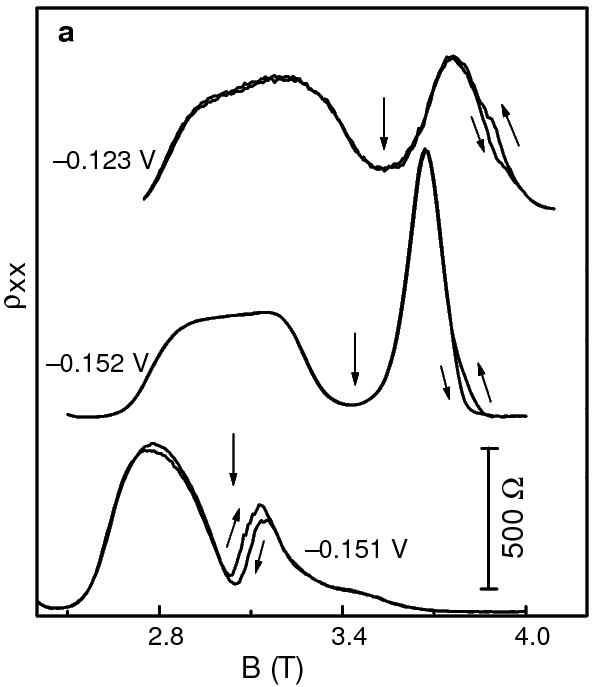|
|
|
Close Help | ||||||||||||||
The single-particle energy spectrum of a two-dimensional electron gas in a perpendicular magnetic field consists of equally spaced energy states, known as Landau levels. Each level is split owing to spin interactions, and its degeneracy is proportional to the magnetic field strength. When the ratio, ν (or ‘filling factor’), of the number of electrons and the degeneracy of a Landau level takes an integer or particular fractional values, quantum Hall effects occur, characterized by a vanishingly small longitudinal resistance and a quantized (transverse) Hall voltage. The quantum Hall regime may be used for the controlled study of many-particle cooperative phenomena, such as order-disorder phase transitions (analogous to those observed in conventional magnets). Both isotropic and anisotropic ferromagnetic ground states have been predicted to occur in the quantum Hall regime, some of which have been investigated experimentally in samples with different geometries and filling factors. Here we report evidence for first-order phase transitions in quantum Hall states (ν = 2, 4) confined to a wide gallium arsenide quantum well. We observe hysteresis and an anomalous temperature dependence in the longitudinal resistivity, indicative of a transition between two distinct ground states of an Ising quantum Hall ferromagnet. The microscopic origin of the anisotropy field is identified using detailed many-body calculations [1].

Traces of longitudinal resistivity ρxx at T = 330 mK near filling factor ν = 4, obtained after thermally cycling the sample, for up and down sweeps of the magnetic field (B). The up and down sweeps are indicated by arrows approximately parallel to the trace. The presence of hysteresis is always correlated to the suppression of the ν = 4 state (indicated by vertical arrows). The shift in the position of the ν = 4 state indicates small differences (less than 15%) in the total electron density obtained after thermally cycling the sample.
[1] Vincenzo Piazza, Vittorio Pellegrini, Fabio Beltram, Werner Wegscheider, Tomas Jungwirth, Allan H. MacDonald: Nature 402 638 (1999), doi:10.1038/45189.
Copyright © 2008-2010, Fyzikální ústav AV ČR, v. v. i.